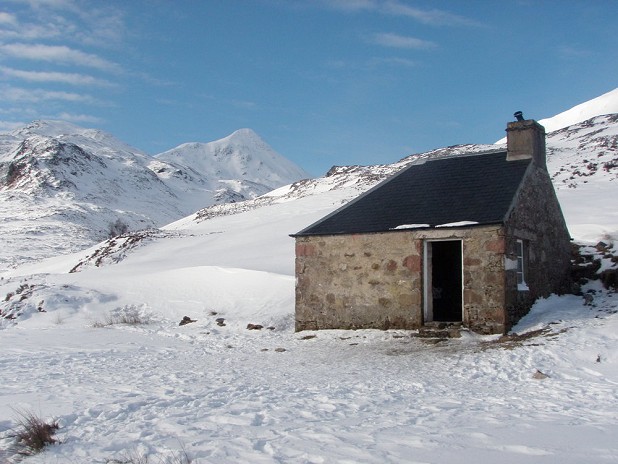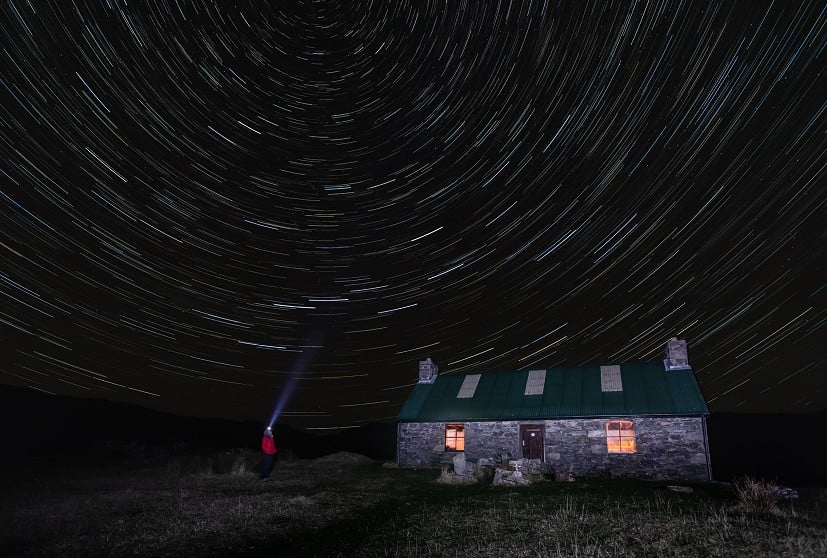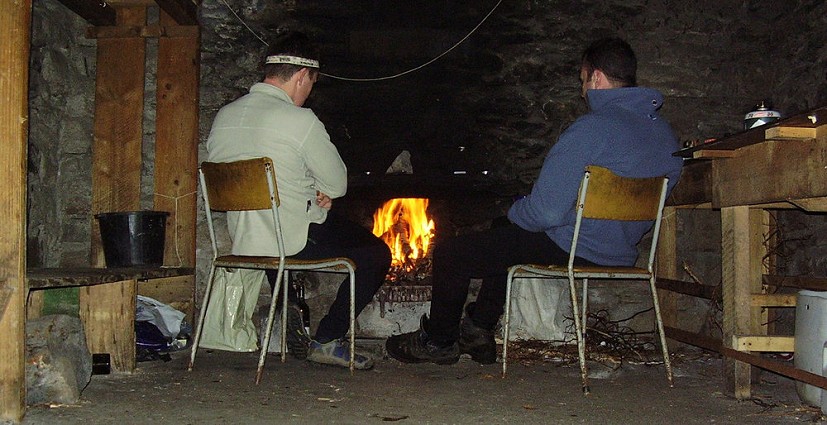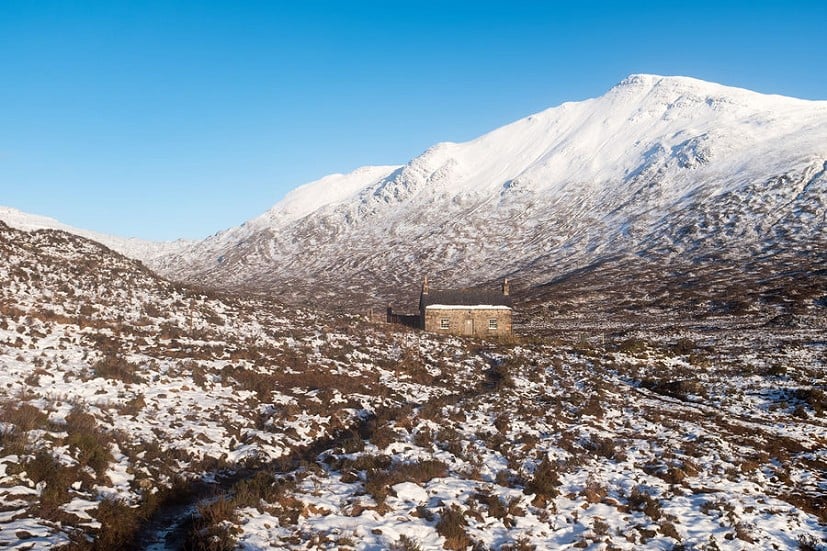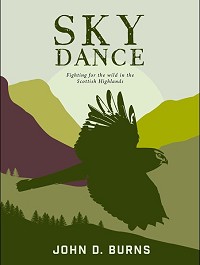10 Tips For a Winter Bothy Night
Is the festive indulgence getting a bit much? Try going back to basics with a winter bothy night, advises John Burns. But wait, there are a few things you need to know first...
You know it's coming, that point on Christmas Day when your heart yearns to escape to the wild. You'll be sitting there surrounded by the people you love or the people you at least try to love. Aunty Joan was very kind to little Timmy. She bought him that lovely plastic trumpet that he's been blowing down your left ear for the last three and a half hours. Then there's Granny. She's a nice, sweet old lady, and has just told you the fascinating story of her gallbladder operation for the seventeenth time since breakfast.
Your body is sitting on the settee but your mind put its boots on and left an hour ago. Mentally you have already hiked up the track. You are enjoying the stillness as your breath mists in the cold air. Then you see it in the distance - the rough stone cottage sitting beneath the mountain. You push open the wooden door. You light the fire and the candles. Pour a glass of sherry.
That's what you think will happen. The truth can be very different. If you've never visited a bothy in winter, or it's been a while, there are some things you should know.
Here are ten serious and not so serious tips for winter bothy visits:
1. It's cold out there
Your imagination can take you to the bothy fireside but it doesn't feel the cold. Bothies are very cold places in winter. They don't have central heating and only a few have double glazing. Remember when you were a child and frost froze on the inside of windows? Sorry, that was when I was a child. You've always had central heating. Well, the insides of bothies often freeze in the coldest of weather so you need to be prepared.
Take a good sleeping bag. Do take enough coal, kindling and fire lighters, for a decent fire. At least 8kg is the ideal amount although the more you have the better. That amount of coal should keep the fire going long enough for you to have a comfortable evening. Many people never light a coal fire these days and bothy fires can be tricky to light. It's a good idea to get the best coal you can by going to a coal merchant and not relying on the stuff that petrol stations sell. Ask for top quality house coal, not smokeless fuel. Eight kilos of good coal weighs exactly the same as eight kilos of bad coal and there is a vast difference in the amount of heat they produce.
Check out my advice on firestarting here:
2. Make sure you can find the bothy
Probably the most important thing about visiting a bothy is getting there. What you want is to be sitting by a fire talking nonsense with a decent glass of whisky in your hand by seven pm. What you don't want is to be blundering about in the dark and rain at midnight trying to find the place. Plan to arrive early. Plan to get to the bothy at least two hours before dark. Then if you are a bit late you will still be able to find the doorway.
Some bothies like to hide. They are made of natural stone and covered in moss. If they see you coming they'll duck down and sneak off. Well that might not be literally true but it's been my experience that some bothies seem to be able to do that. Try and choose a bothy that's easy to find for you first trip. Try to go to one that is on a good land rover track. If it's got a river on one side or if there's a hill behind it that can be a good point of reference. Avoid bothies in forests because they can be really good at running away and hiding.
3. It's wild out there
You'll be going into a remote and wild environment so make sure you can navigate before you go. If you have never been hillwalking starting with a trip to a mountain bothy in winter is not a good idea. You'll be carrying a heavy rucksack and there could be consequences if you get lost. Make sure you are comfortable in the outdoors and are confident that you have the right navigational skills to get where you are going.
4. It's dark at night
No I mean it's really dark at night in the hills. It's sort of middle of the night, turn all the lights off, put a bucket on your head, sit in the cupboard under the stairs and close your eyes sort of dark. Not the sort of pretend dark you get in town. There are no street lights. If there's no moon it can be so dark you can't see anything at all. The answer is to take a good torch, or better yet two torches. No, you can't use your phone. Get a good head torch if you can. Don't take one you got for a fiver in the newsagents. You need something reliable; something that lights up when you need it. Buy your torch from an outdoor shop. Make sure that your nephew didn't pinch the batteries for his game controller before you leave the house.
5. You need to be self-sufficient
Imagine that you'll be camping in an old house. Always take a pot to cook in, cutlery, stove and stove fuel. There's usually something to carry water in, but having your own bottles and a cup is a good idea. A few candles are good as well as food... it'll be a long night. I always carry at least two sources of fire. A box of matches and a cigarette lighter are a good combo - matches can get wet so a backup is good.
6. Take a tent
A lot of people carry tents in to bothies and the advice from the Mountain Bothies Association, the charity that maintains bothies, is that bothy visitors should be prepared to camp. The bothy might be overcrowded or somebody might be making a lot of noise, so you might want to head off and find somewhere more private. Or perhaps you'll get there to find the roof has blown off...
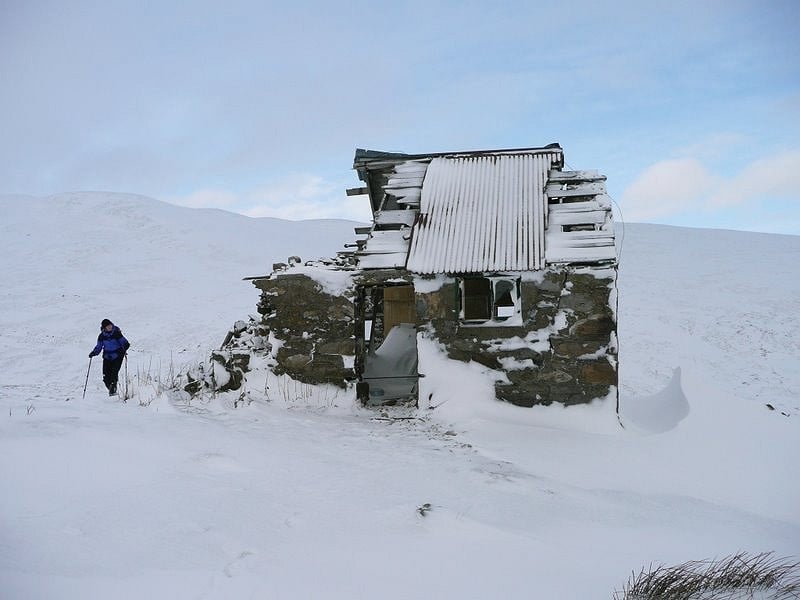
7. Respect the environment
Never cut down live wood to burn. You should always take your own fuel in. There are no toilets in most bothies so you need to bury human waste some distance from the bothy. Most bothies have a spade that acts as a bathroom, but bring a trowel in case the spade has gone walkabout. All bothies are looked after by someone. The MBA calls such folk Maintenance Organisers (MO). MOs are volunteers doing a difficult job so don't make their life any harder than it is. Always carry out any rubbish. Folk seem to think it's a good idea to leave old whisky and wine bottles in bothies to use as candle holders. This is not a good idea as all bothies have far too many of these as it is. Other folk carry in special bottles that have their own legs so they can walk out by themselves. I don't know where they get these bottles from. I've never seen any and I've looked everywhere.
8. Try to get on with other visitors
Bothies are unregulated - there is no warden. People who visit bothies are a different breed. Drinking alcohol and talking round the fire is standard practice in bothies. Smoking tobacco and other substances is also common. The smoking ban in Scotland does not extend to bothies so it is perfectly legal to smoke in them. If you don't like smoke you can ask smokers to stop and they might do so but they have every right to carry on puffing away if they like. I'm an occasional smoker. I take the view that inhaling tobacco smoke once in a while in a bothy is unlikely to kill me. If you can't tolerate an evening in a smoke-filled room then refer to my advice about bringing a tent. In any case bothy fires pump out a lot of smoke, so a smoke-free bothy doesn't really exist.
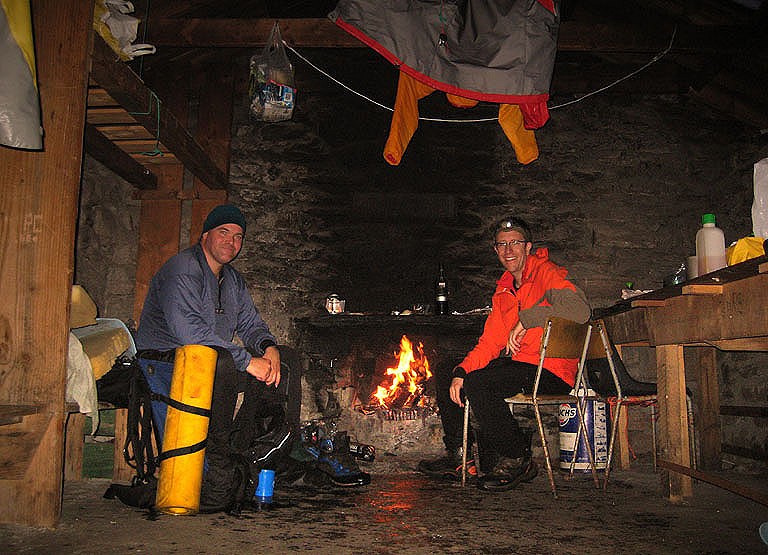
You might well meet a few characters. Me being one of them. Meeting up with other bothy goers is one of the joys of bothy trips. I've never had any real conflict with other visitors in all the years I've used bothies. I have heard of some people being obnoxious to others but that is very rare. Everyone has equal rights in a bothy and all deserve to be treated with respect. Treat people as you would like to be treated. If anyone behaves badly it's worth remembering that the law applies in bothies just as it does anywhere else, so people breaking the law should be reported to the police.
9. Check out the bothy first
If you are thinking of going to a specific bothy and want to know more about it there are a number of Facebook groups you can join to get advice. The MBA website has grid references and brief descriptions of bothies. It's often a good idea to check out a bothy on Google Earth as well as using the map. You can sometimes spot things like the condition of a track better on satellite images than you can on a map. I always use Streetview to check out what the track looks like where it leaves the road. That can prove useful as one Landrover track can look very much the same as another and it's easy to confuse them.
10. Follow the bothy code
The Mountain Bothies Association has issued a simple list of dos and don'ts. If you follow the code you will help preserve the bothy for other people:
The Bothy Code
- The bothies maintained by the MBA are available by courtesy of the owners. Please respect this privilege.
- Please record your visit in the bothy logbook.
- Note that bothies are used entirely at your own risk
Respect Other Users
- Please leave the bothy clean and tidy with dry kindling for the next visitors. Make other visitors welcome and be considerate to other users.
Respect the Bothy
- Tell us about any accidental damage.
- Don't leave graffiti or vandalise the bothy.
- Please take out all rubbish which you can't burn.
- Avoid burying rubbish; this pollutes the environment.
- Please don't leave perishable food as this attracts vermin.
- Guard against fire risk and ensure the fire is out before you leave.
- Make sure the doors and windows are properly closed when you leave.
Respect the surroundings
- If there is no toilet at the bothy please bury human waste out of sight. Use the spade provided, keep well away from the water supply and never use the vicinity of the bothy as a toilet.
- Never cut live wood or damage estate property. Use fuel sparingly.
Respect agreement with the Estate
- Please observe any restrictions on use of the bothy, for example during stag stalking or at lambing time.
- Please remember bothies are available for short stays only. The owner's permission must be obtained if you intend an extended stay.
- Because of over crowding and lack of facilities, large groups (6 or more) should not use a bothy.
- Bothies are not available for commercial groups.
11. Enjoy yourself.
That's what bothies are for.
John Burn's latest book, Sky Dance, is out now. This is a novel that confronts live issues in the debate around upland conservation, land ownership and re-wilding.
Here's what Rob Greenwood said about it in our recent review:
"Sky Dance tells a story, a good heartwarming story, as opposed to academically laying out the situation, and it does so through the friendship of two mountain club members, Angus and Rory.
"The book itself is predominantly set on the (fictional) isle of Morva, where two conflicting landowners have differing ideas of what the upland environment should look like. Lord Purdey represents the old guard, keeping tight control over predator and pest, so that the grouse stock is ample for the shooting season. The neighbouring estate, owned by the Hawaiian shirt clad Tony Muir, is very different indeed, with a more modern approach to land management, where the priority is very much on the restoration of upland forests, cultivating habitat to aid increasingly rare species, and - most relevant to the direction of the book itself, and the fates of those within it - applying to reintroduce apex predators such as the lynx.
"Located between the two estates is the Glen Bothy, where Angus and Rory spend their weekends climbing and walking across the island's peaks. The bothy is a place of sanctuary, as is the island itself, which feels removed from the mainland and all the stresses it brings. However, within the opening chapters - set in a particularly heavy winter - Angus and Rory have an intense, near-death experience which leads to something changing within Angus, who begins to question his love of the mountains, his age, and ultimately his redundancy within the club of which he is president. This crisis occurs in sync his eyes being opened to the wildlife he has, up until this point, been completely oblivious of, as Rory (who is many years his junior) highlights the wildlife that both does (and doesn't) surround them - a moment which is exemplified when they see a male hen harrier sky dancing...
"If you have any interest in upland conservation - and it would be a peculiar climber or hillwalker who had none at all - then I'd suggest reading Sky Dance. I for one have added John's two other titles - The Last Hillwalker and Both Nights - to my reading list."
For more info see v-publishing.co.uk


